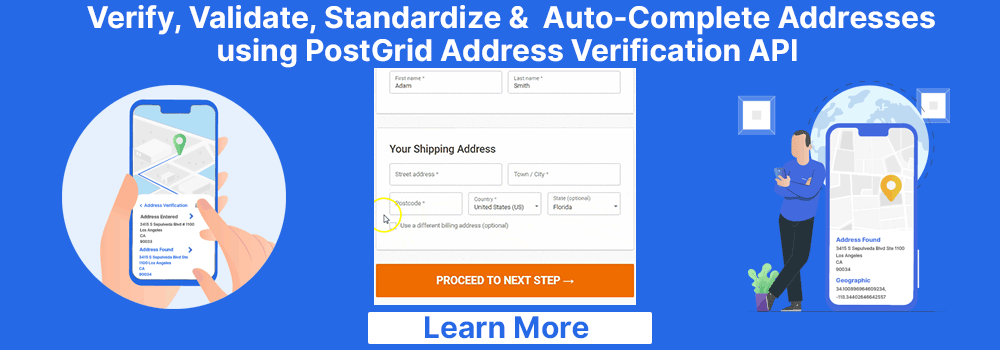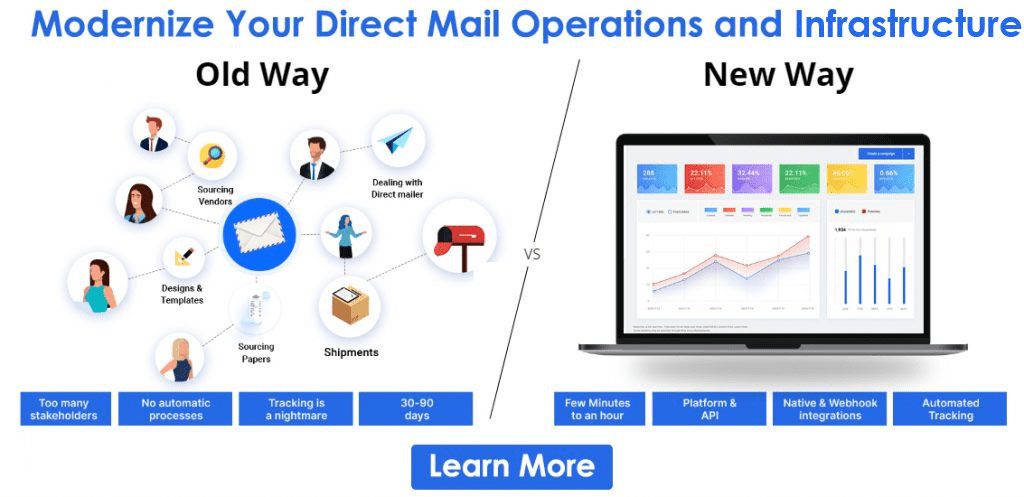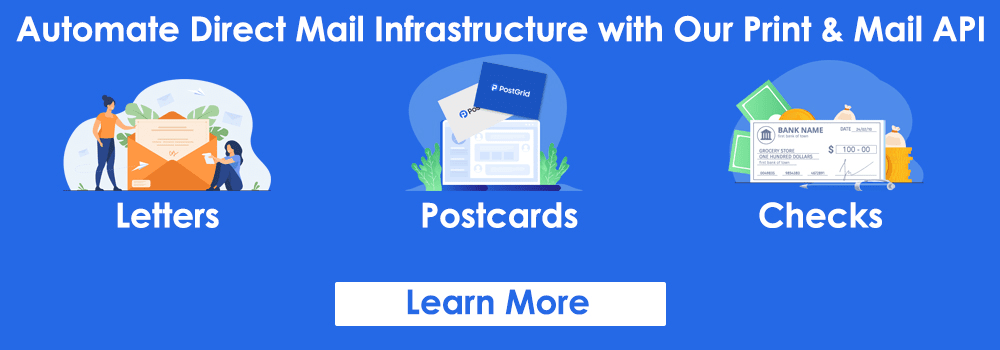Address Normalization Service
What is Address Normalization and How is it Used?
Address normalization or address standardization is the process of formatting an address in the standardized format approved by the official postal body of a country. In the US, this official body is the USPS. This means that USPS defines the standard or official format of the address inside the country. Businesses often have to deal with large data of addresses as many business activities need them.
Let it be for marketing purposes, for making deliveries, for billing, or something else entirely. Regardless of what the purpose is, most businesses rely on an accurate and reliable address database for numerous of their operations.

As we have briefly mentioned before, Address Normalization, also called Address Standardization, is the process of formatting a given address to the standardized /official format defined by the country’s official postal body. According to the USPS, a standardized address is “one that includes all required address elements and that uses the Postal Service standard abbreviations (as shown in this publication or in the current Postal Service ZIP+4 file).”
Since businesses deal with a large address database, they usually use an address standardization service through advanced address verification software.
So, why use an advanced address verification tool for address standardization?
Because address standardization does not make the address valid, and unless validated, you could be wasting money on postal mails that will never reach their intended destination.
The whole reason why businesses want their addresses to be standardized is to streamline their various business operations. So, if the software is made purely for conducting address normalization/standardization, it will only just convert the addresses to the correct format. There is no telling whether such an address is even a deliverable one or not. However, the standardized address through an address verification tool like PostGrid will be a complete one.
Tools like PostGrid will automatically add missing details like city, state, postal code, and even the ZIP+4 code. Additionally even the spelling and abbreviations are formatted to the USPS-approved format. Once it has been standardized, it can then be validated to be real or not. For the validation of the address, the standardized address is compared against the USPS’s official address database. If a match for the address shows up in the USPS database then the address is classified as “valid.”
Casing & Capitalization in Normalized Address
Generally, we tend to use uppercase letters when writing an address because we either think that’s the standard format or to avoid unnecessary confusion. It may very well be true that using the uppercase letters is, in fact, less confusing, but that wouldn’t make it the standard format. We are not saying that using the uppercase when writing the address is wrong because it’s not.
The lower or uppercase characters are fine to be used in the address as long as it is clearly printed and meets USPS OCR address standards. So it doesn’t matter if you write “Bob Rd’ or “BOB RD” as long as the readability is not compromised. You can use advanced address verification tools like PostGrid to validate the address, and then if you prefer using all uppercase letters, you could always change it to ALL UPPERCASE.
How to Get a Standardized/Normalized Postal Address
Address standardization is a relatively straightforward process, and it can be done through software, or you can even choose to standardize the address manually.
Address Normalization via API Software
Address Normalization through API & Software is the easiest and most accurate way to standardize addresses. There is practically no limit to the number of addresses you can standardize using an advanced software tool like PostGrid. What’s more, is that the address standardized through an address normalization API like PostGrid can also tell you whether the address is valid and deliverable.
As far as businesses are concerned, the ideal way to go is the easier and much faster, automated software. It ensures that your operations run smoothly with minimal wastage. Most importantly, it frees up valuable time and resources and allows you to optimize your business operations. If you run a business that often sends out direct mails or if you manage a large address database adapting a smart solution like PostGrid is a must.
Why? Because think of the extensive work hours you could save by automating the process. If your database has tens of thousands of addresses, it could take you forever to have them all standardized. And even if you do have the time, there is still the issue of human error, which is inevitable in such a process. The software can do the same job within a matter of seconds and do it with an accuracy that is almost impossible for humans.
Manual Address Normalization
As mentioned before, address normalization or address standardization is a simple process, and you can easily do it manually too. However, there are a lot of fine details involved in address standardization which is better left unsaid here because it will only make our brain go haywire. So, here, we’ll just discuss the basic steps for the address normalization of the majority of addresses in the US.
As one might expect, the first thing we need to do after we get the address to be standardized is to check it for misspellings. Check and verify that the street, city, and state names are correct. Once you have done that, you can start checking for any mistakes made in the abbreviations. As per USPS, the abbreviations only have one correct version. You can check this out with the USPS-approved set of abbreviations here.
As we mentioned before, there is no need to be worried about the casing and capitalization of the address unless there is a preference that you wish to follow. The USPS will accept lower, upper, or proper case lettering on your postal mail. The next thing you should consider is the ZIP+4 code of the address. Although it is not necessary to provide the ZIP+4 code, it can speed up the mailing process by up to 2 days.
The ZIP+4 code is generally assigned to just 10-20 homes or locations. The ZIP+4 code gives USPS an accurate idea about where the mail is to be delivered. However, finding the ZIP+4 code is no easy task if you intend to do it manually. There are somewhere between 8 to 16 million ZIP+4 codes in the US, and they could change every month, although that’s not always the case.
Manually trying to figure out the ZIP+4 code for a large number of addresses is practically impossible. So, you can either live with your postal mails getting received two days late or adapt a smart solution that lets you find the ZIP+4 code within a matter of seconds. With advanced software, you can verify the address and get the ZIP+4 code to ensure that the post reaches its destination ASAP. In comparison, getting a standardized postal address is just the cherry on top.
CASS Address Normalization/Standardization
CASS, also known as the Coding Accuracy Support System, was developed by the USPS. CASS is a program that certifies address standardization and verification software. Generally, a CASS-certified software will be able to standardize the address to a USPS-approved format, update an address if there are any changes, and verify whether the address is valid and deliverable.
So, now that we know what CASS is and what a CASS-certified software can do, it’s time we turn to CASS address standardization. At this point, you are probably wondering what is CASS address standardization and how does that differ from regular address standardization? Well, address standardization is the process of formatting an address according to the USPS guidelines.
CASS address standardization is a certification. It certifies that the USPS approves a given service or software to standardize addresses according to their official guidelines. A perfect example of CASS-certified software is PostGrid. It is an advanced address verification tool that can help you standardize your address database regardless of how big the data is. Furthermore, it validates the addresses and ensures they are deliverable, and takes only a fraction of the time taken to do it manually.
How to Obtain USPS Standardized Address
Any business that is serious about its direct mail efforts will want to work with USPS standardized addresses. The reason behind this is simple. Businesses want to make sure their postal mails get delivered to their destination. In some cases, where the businesses are sending important documents such as bills and invoices, the posts’ deliverability is vital to their business.
Companies that run various campaigns that involve the use of direct mail also can’t afford to have bad data. Even having incomplete addresses could end up negatively affecting the campaign. This further underlines the importance of using USPS standardized addresses in all the efforts made by the company. So, as far as businesses are concerned, they need an advanced address normalization process that can also ensure that their address is real, deliverable, and, most importantly, complete.
The only acceptable way to obtain USPS standardized addresses for businesses is through an advanced address standardization tool with an address with a CASS-certified address verification capability such as PostGrid.
An advanced tool like PostGrid has the capability to bulk verify addresses. You can feed in your address database as a CSV file into PostGrid and it will return the data after it verifies the address, corrects any typos, and presents you with USPS standardized addresses.
Address Normalization for Project Managers & Database Admins
Project Managers and Database Administrators often have to work with large databases of customer data. Let’s assume you are a Project Manager/Database Administrator, and you have been assigned to merge two databases of customer data. In this case, several challenges arise, such as the databases could be in different formats, and then, there may be the same addresses present in both the databases.
However, the important part is taken care of by the advanced address verification tool because what really counts is the accuracy of the address. Tools like PostGrid standardize the address according to the USPS standards, and to do this, the address is first parsed. The software then ensures that the parsed data is in the right format and correct syntax.
Once standardization is complete, the address is subjected to a validation process. In the process, the standardized address is compared against the USPS’s official address database. The USPS database is updated frequently, and the validation process ensures that the address you have is real, valid, and deliverable.
Even if you were to try to unify these databases by extracting a CSV file of the database, both databases still use different fields for storing the address data. Therefore, the safe way to go around this is to push each CSV file through advanced address verification tools like PostGrid and get the verified addresses. Once you have verified and standardized the addresses, combine the new data into a new excel file. You can easily get rid of the duplicates from the excel file with a simple filter.
Conclusion
Address normalization or address standardization makes them clean and easy to understand for the USPS and the computer database (and ourselves). By converting the addresses to USPS’s standard format, it becomes easier for the posts to pass through the USPS system and ultimately reach their destination ASAP.
However, mere address standardization is not even close to enough for the requirements of a business. Businesses rely on an accurate database for their smooth operations, and this means that they also have to make sure that the addresses they have are real and deliverable. This is where advanced address standardization and verification tools like PostGrid come into the picture.
CASS-certified tools like PostGrid standardize the address and then check their validity against the USPS’s official address database to check whether they are valid or not. This can optimize your various business operations and minimize wastage at the same time.
Ready to Get Started?
Start transforming and automating your offline communications with PostGrid
The post Address Normalization Service appeared first on PostGrid.
source https://www.postgrid.com/address-normalization/




Comments
Post a Comment